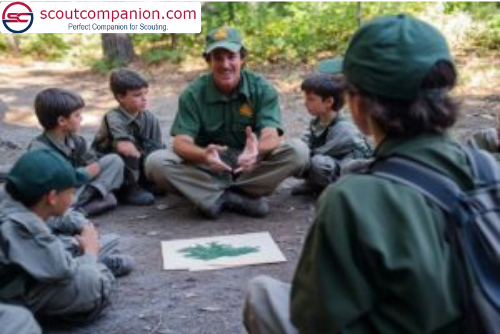The Wood Badge Scouting is a leadership program for adult leaders in the Boy Scouts of America(BSA). This scouting program creates impactful Wood Badge Scout leaders to strengthen scouting units. This article covers the significance of Wood Badge training phases, the skills it imparts, and how Wood Badge Scout contributes to the overall growth and effectiveness of scouting communities. For more on Wood Badge Scout training courses, you can explore the Boy Scouts of America Official Site.
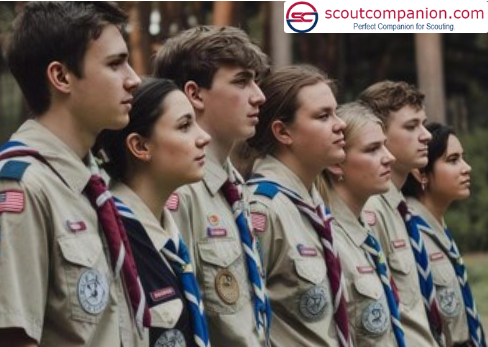
Table of Contents
What are Wood Badge Scouts?
Wood Badge Scout is the advanced level leadership training program in BSA and worldwide. This scouting program is named after the Wooden Beads which will be awarded to the participating scouts as a matter of appreciation for their achievement.
- Practical phase (In-person training)
- Application phase (Leadership project)
The Wooder Badge Scout training course is categorized into two main phases:
1. Practical phase (In-person training)
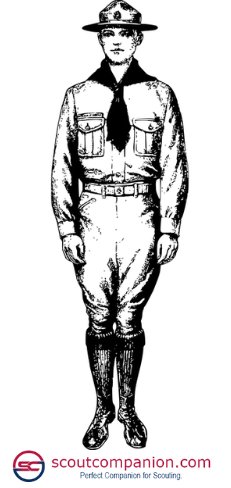
In this phase, the scouts are made to participate in hands-on training courses, where the scouts are asked to handle leadership scenarios, teamwork challenges, and outdoor activities.
The following trainings are given in the practical phase:
-> Leadership development through scouting principles
-> Patrol-based training
-> Outdoor skills and scouting activities
-> Personal reflection and growth
-> Fun and fellowship
-> Leadership development through scouting principles
The Wood Badge Scout participants are divided into small groups called “patrols” to train them in teamwork and leadership skills which are the vital principles of scouting. Following are some of the scenarios where the patrols are given training:
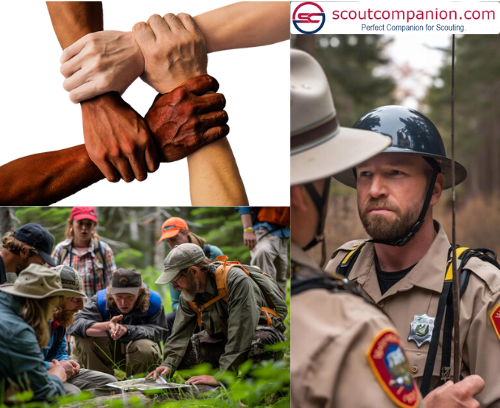
- Teamwork: The adult scouts and their leaders work together to solve problems and complete tasks as a challenge to achieve a common goal. Through this, the participants learn about teamwork.
- Leadership styles: In this challenge, the participants learn about different leadership styles namely, transactional and transformational leadership.
- Effective communication: While working as a team, the participants must speak and listen to other scouts in their patrol. This helps them to learn the importance of effective communication and active listening in both leadership and teamwork
- Decision-making and problem-solving: Leaders should choose the optimal solution by considering the consequences of that solution since it will have impacts on both the individuals and the whole group.
-> Patrol-based training
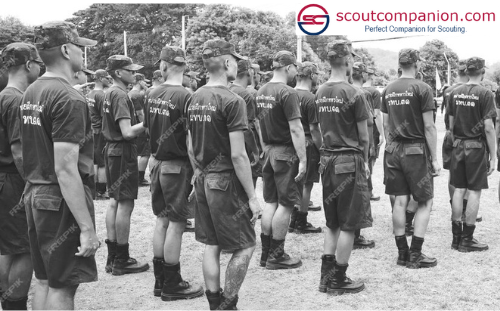
As we know, patrols are small groups containing six to eight participants. Each patrol simulates a scouting unit where participants are given with different leadership roles head patrol leader, assistant patrol leader, where participants can experience different leadership roles.
The patrol system also paves way for collaboration and responsibility which reflects the leadership nature of scouting units.
-> Outdoor skills and scouting activities
Outdoor activities are one of the traditional activities provided in scouting training. Participants are made to take part in activities like camping, hiking, team-building experiences, and scouting games.
During camping the young scouts are led by adult scouts in the process of setting up camps and cooking meals together. While hiking the scout leaders learn basic navigation skills along with leading the young scouts. Team-building exercise also incorporates the scouts in problem-solving tasks that challenges both their physical and mental abilities.
-> Personal reflection and growth
All the challenges and tasks handled by the adult scout leaders not only improve their group performance but also mold their personality, and develop their character and self-awareness.
These participants also engage themselves in self-assessment exercises and receive feedback from their scoutmaster.
-> Fun and fellowship

Even though the practical phase is emphasized in leadership training, it is also made to be a fun-filled phase. Participants will have a good time to spend with each other, creating friendships, sharing stories, understanding each other and celebrating group and individual achievements.
This kind of fellowship creates a strong bond among the patrol groups of Wood Badge community.
2. Application phase (Leadership project)
This is the phase where the scout leaders implement the leadership skills they learned during the first phase. They are assigned a “Ticket” which contains a list of leadership projects that need to be completed. It also provides them an opportunity to apply their scouting principles and strategies in real-world scouting situations.
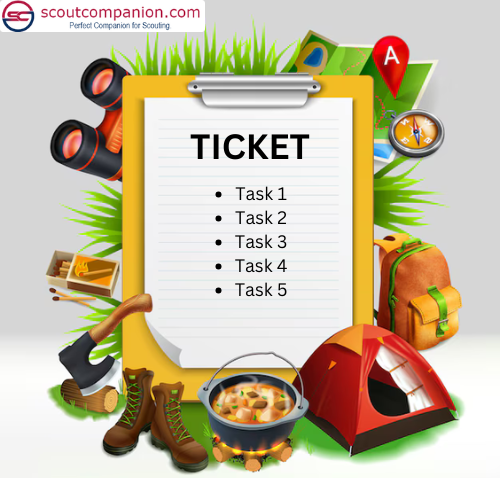
What is a Ticket?
The ticket contains a list of five leadership projects that were created by the participants during the first phase of the training. The ticket should be challenging and achievable by mainly focusing on the practical application of leadership management principles.
Steps in the application phase:
- Creating the ticket: During the first phase the participants are given time to identify their strengths and interests where they can make great impacts. They create the ticket with five project goals with the help of their training advisor.
- Completing the ticket projects: Once the ticket is created, the participants start to complete the tasks created in the ticket. This involves steps like planning, executing, monitoring, and adapting.
- Completion and reporting: After completing the projects in the tickets, the participants will report their results and feedback about their experiences. They also approach their Wood Badge Trainer to discuss the results and feedback. This is an important part of the phase because this is the part where the course advisors evaluate the growth of the participants.
- Approval recognition: Course trainers evaluate the participant’s outcome to make sure that each participant has reached their goal by completing the ticket. After successful completion, the participants are awarded Wood Badges as a symbol of the completion of the ticket and their commitment to their goals.
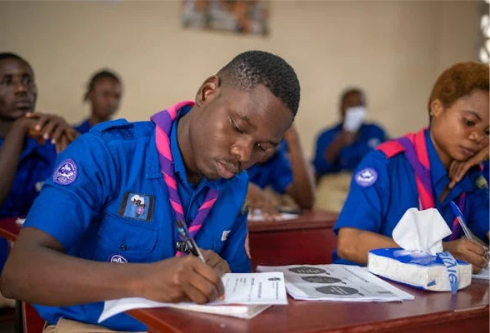
The purpose and impact of the application phase
The main target of this application phase is to ensure that scouts should not only learn the scouting principles theoretically but also they should apply them in real life in meaningful ways. The scouts also gain skills like,
- Effective communication and delegation
- Project management and proper planning
- Conflict resolution and teamwork
- Resilience and adaptability under pressure
Why do Wood Badge Scouts matter?
We can discuss the following reasons that justify the importance of Wood Badge Scouts under this topic.
- Leadership development
- Inspiration and motivation
- Commitment to scouting values
- Advanced training
- Community building
1. Leadership development
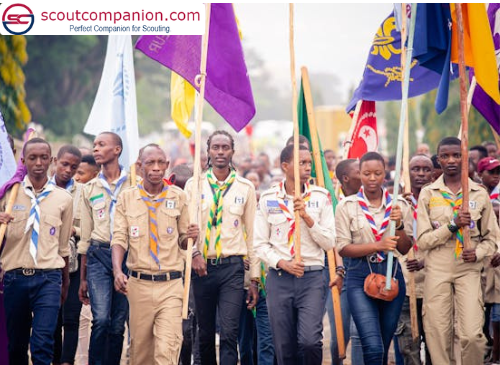
The main purpose of Wood Badge Scouting is to develop skilled leaders with good leadership qualities. This training equips the scouts with essential skills to effectively lead groups and manage teamwork. This training is beneficial for both the young scouts and those who are guided by them and also it helps the adult scouts who guide them.
2. Inspiration and motivation
The Wood Badge Scouts serves as a role model providing great inspiration and motivation for young growing scouts. Their commitment to the principle of scouting encourages young scouts to actively participate in their roles. By sharing their experience and knowledge, they motivate both new young scouts as well as adult scouts to strive for excellence by strictly following the scouting values.
3. Commitment to scouting values
The Wood Badge Scouts, after completing their training in wood badge scouting, develop a strong and deep commitment to the ethics and values of scouting. They project integrity, responsibility, and respect in their actions with strong commitment.
This commitment strengthens their personality by helping them develop strong character while engaging in community services and outdoor activities. By embracing the values of scouting, the scouts not only empower their lives but also create a huge positive impact and responsibility on the communities they live.
4. Advance training
The extensive training provided in the Wood Badge training upgrades the leaders with advanced skills that go beyond basic scouting principles. Leaders are also engaged in hands-on training, developing problem-solving abilities, strategic planning, and effective communication.
5. Community building

The scouts also organize events within their community for the sake of creating opportunities for collaboration. They also share resources with other scouting troops across their scouting units at times of emergency.
This strengthens the bonds among scouts and enhances the overall effectiveness of the scouting program.
Conclusion:
In summary, the Wood Badge Scouting program is more than just advanced training for adult leaders; it is a vital component of the scouting community that supports leadership development, inspires others, has a deep commitment to scouting values, provides advanced training, and develops community building. By investing in the development of Wood Badge Scouts, we ensure that the values and effectiveness of scouting continue to thrive for future generations.
